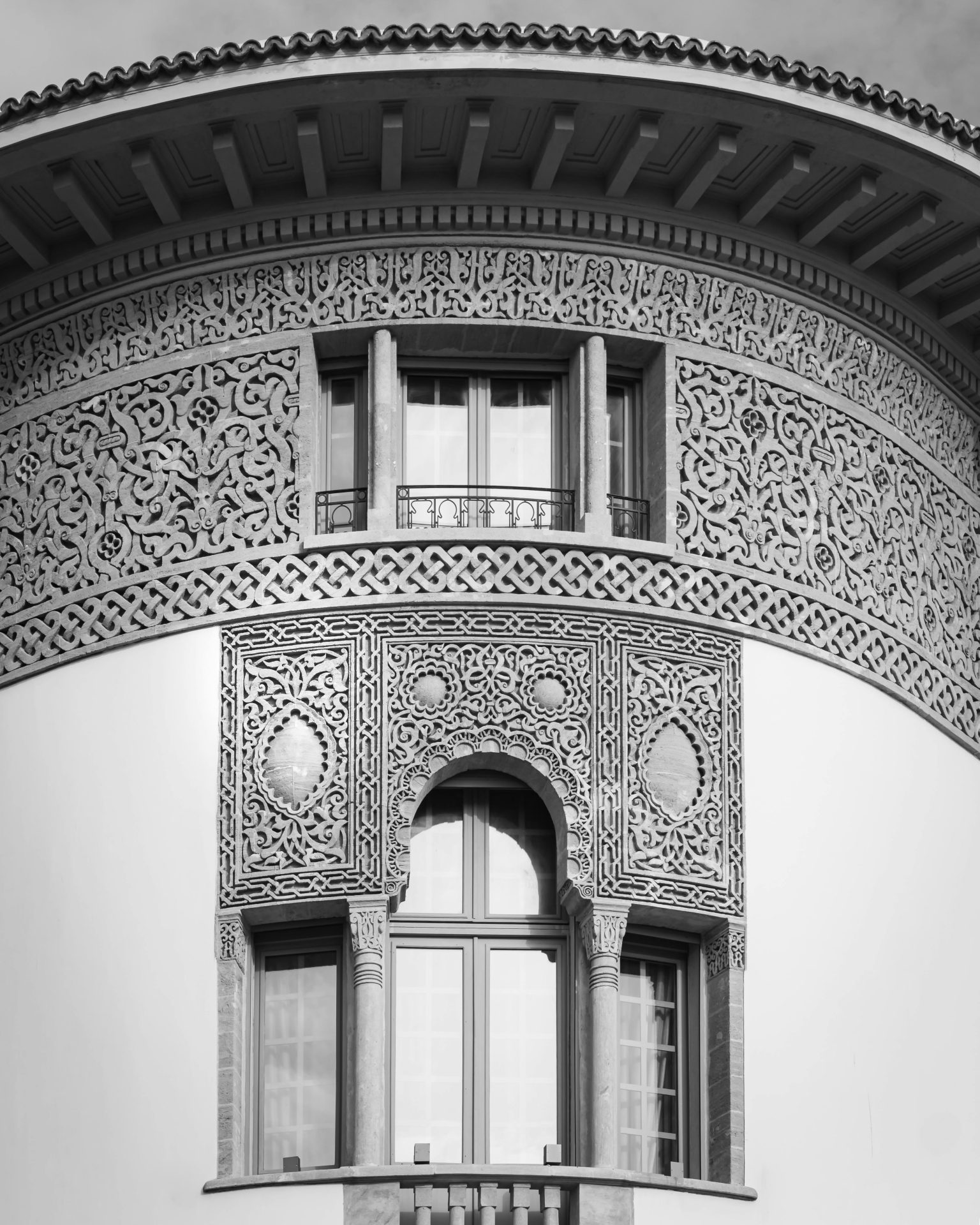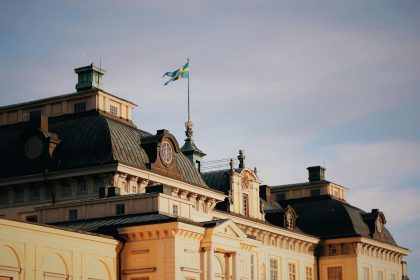Rabat, the capital of Morocco, is a city steeped in history and culture. As one of the country’s four imperial cities, it boasts a rich tapestry of architectural marvels, historical monuments, and vibrant streets that encapsulate the essence of Moroccan heritage. Among the most significant landmarks in Rabat is the Royal Palace, known as the “Dar al-Makhzen.” This grand palace serves as the official residence of the King of Morocco and stands as a testament to the country’s regal past and architectural prowess.
The Royal Palace: A Symbol of Heritage
The Royal Palace of Rabat is in the city’s heart, surrounded by beautifully manicured gardens and impressive fortifications. Its construction dates back to the 17th century, during Sultan Moulay Ismail’s reign. The palace’s architecture combines elements of traditional Moroccan styles with influences from Andalusian and Islamic design, reflecting the rich tapestry of cultures that have shaped the region.
As you approach the palace, you are greeted by the striking entrance gate adorned with intricate tilework and elaborate carvings. The majestic gates open to a vast courtyard surrounded by lush gardens and impressive buildings. Although the palace itself is not open to the public, the exterior and the gardens offer a glimpse into the opulence and grandeur of Moroccan royalty.
The Gardens of the Royal Palace
The gardens surrounding the Royal Palace are a serene escape from the bustling city. These meticulously landscaped gardens are filled with vibrant flowers, towering palm trees, and peaceful fountains that create an oasis of tranquility. Visitors can stroll through the pathways, enjoying the fragrant blooms and the soothing sounds of water. The gardens also provide a picturesque backdrop for photography, especially during the spring when the flowers are in full bloom.
One of the unique features of the palace gardens is the presence of several traditional Moroccan architectural elements, such as the beautifully tiled benches and ornate fountains. These details reflect the harmonious blend of art and nature that characterizes Moroccan gardens. The gardens are not only a place for relaxation but also a space where the cultural and historical significance of the palace can be appreciated.
A Walk Through History: The Kasbah of the Udayas
Just a short distance from the Royal Palace lies the Kasbah of the Udayas, a historic fortress that dates back to the 12th century. This UNESCO World Heritage site is essential to any journey through Rabat’s historical places. The kasbah features narrow, winding streets lined with charming white and blue houses, creating a picturesque atmosphere that transports visitors back in time.
The Kasbah of the Udayas was originally built to protect the city from invasions. As you explore its ancient walls and fortifications, you can almost hear the echoes of history. Within the kasbah, the Oudayas Museum is housed in an old palace that showcases Moroccan art and artifacts. The museum’s collection includes traditional clothing, ceramics, and weapons, providing insight into the daily life and customs of the Moroccan people throughout the ages.
One of the highlights of the Kasbah is the stunning view of the Bou Regreg River and the Atlantic Ocean from the Kasbah’s cliffside. The combination of the river, ocean, and the city of Rabat creates a breathtaking panorama that is not to be missed.
The Hassan Tower: A Testament to Ambition
No visit to Rabat would be complete without a trip to the Hassan Tower, an iconic city symbol. This incomplete minaret, 44 meters tall, was intended to be part of a grand mosque built in the 12th century during the reign of Sultan Yacoub al-Mansour. Although the mosque was never completed, the towering minaret remains a striking sight.
The Hassan Tower is a remarkable example of Almohad architecture, featuring intricate geometric patterns and a unique red sandstone exterior. Visitors can climb the surrounding platform for an elevated view of the tower and the nearby Mausoleum of Mohammed V. This stunning white marble structure houses the tombs of the Moroccan royal family.
The mausoleum is a work of art adorned with beautiful mosaics, carved wood, and intricate tilework. It is a place of reverence and respect, attracting locals and tourists who wish to pay their respects to the late king and his family. The combination of the Hassan Tower and the Mausoleum creates a powerful historical narrative that speaks to Morocco’s rich past.
The Chellah: A Journey to the Past
Another fascinating historical site in Rabat is the Chellah, an ancient Roman and medieval site that offers a glimpse into the city’s layered history. Located just outside the city walls, Chellah was originally a Roman city known as Sala Colonia. After the fall of the Roman Empire, it became a necropolis and later a medieval Islamic settlement.
As you wander through the ruins, you will encounter remnants of Roman columns, ancient walls, and the beautiful gardens that have taken over the site. The blend of Roman and Islamic architecture is striking, showcasing the city’s evolution over the centuries. The site is also home to various flora and fauna, making it a peaceful retreat for nature lovers.
One of the highlights of Chellah is the presence of storks nesting on the ancient ruins, which adds a unique charm to the site. The serene atmosphere and historical significance make Chellah a must-visit destination for anyone interested in Morocco’s rich heritage.
The National Archaeological Museum
A visit to the National Archaeological Museum in Rabat is essential to further delve into Morocco’s historical narrative. Established in 1932, this museum houses an extensive collection of artifacts that span thousands of years, showcasing the country’s rich cultural heritage.
The museum’s exhibits include prehistoric tools, Roman mosaics, and Islamic art, providing a comprehensive overview of Morocco’s history. One of the standout pieces is the collection of statues from the Roman city of Volubilis, which offer insight into the artistic achievements of ancient civilizations. The museum’s modern design and informative displays make it an engaging experience for visitors of all ages.
Conclusion: A Tapestry of History and Culture
A journey through the Royal Palace of Rabat and its surrounding historical places is a captivating experience that immerses visitors in Morocco’s rich heritage. From the opulence of the Royal Palace and its serene gardens to the historical significance of the Kasbah of the Udayas, Hassan Tower, Chellah, and the National Archaeological Museum, each site tells a story of ambition, artistry, and cultural evolution.
As you explore Rabat, you will witness the architectural beauty of these historical places and gain a deeper appreciation for the traditions and values that have shaped Moroccan society. The city stands as a living testament to its past, inviting travelers to explore, discover, and connect with an intricate and enduring history. Whether you are a history enthusiast, an architecture lover, or simply someone seeking to experience the beauty of Morocco, Rabat’s royal heritage will surely leave an indelible mark on your journey.



